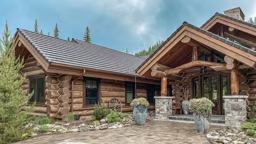
Photo by Scott Graham / Unsplash
Many people assume obtaining insurance is one of the last holes to fill in the building-your-dream-log-home puzzle. Unfortunately, underwriters can halt the project if it doesn’t meet their guidelines, and that could spell trouble.
The time to reach out to your insurance agent is before you’ve purchased land, signed a contract or written a check to anyone, says Fred Roberts of LogHomesInsurance.com, a Fayetteville, Texas-based independent agency representing numerous “A” rated state and national insurance carriers.
Here are Fred’s tips for a sound insurance strategy:
1. Ensure that all contractors who set foot on your building site are licensed, bonded and insured, including liability and worker’s comp. Obtain copies of their policies and request to be listed as a certificate holder. This ensures you’ll be notified if coverage is cancelled.
2. Contractors purchase “builder’s risk” policies that insure their tools and materials. But this doesn’t cover anything you own, including your log home package. So before you take delivery of your materials, purchase a builder’s risk policy in your name to protect yourself from theft or damage. (You can add your builder’s name or their DBA as an “additional insured” to your policy if they require it.) Builder’s risk policies are typically valid for 12 months.
3. Invest in a “Course of Construction” policy to provide liability protection should anyone wander onto your site and hurt themselves.
4. Don’t assume that your level of insurance coverage is adequate; read the carrier’s policies. This seems like a no-brainer, but most people don’t read their policies. For example, some insurance companies have limits on coverage for theft, starting as low as $15,000. This could be problematic since the value of your log home package will be many times that. Flooding and expansive soils that can buckle foundations are not typically covered. While fires are covered by the homeowner’s policy, in the event of having to rebuild there may be exclusions, such as no coverage for the reconstruction of the foundation or hauling away debris.
5. Keep accurate records and receipts for all materials and labor. In the unlikely event of a catastrophe, you will need to share them with your carrier as proof of the loss incurred.
6. Change your builder’s risk insurance policy to homeowner’s insurance once construction is complete. Builder’s risk doesn’t cover personal property, so don’t move in until you have homeowner’s insurance in place.
7. Last, but not least, work with an agent who is familiar with log home construction and dwelling. Having an experienced, knowledgeable representative on your side will pay dividends.








_11868_2024-09-17_08-44-256x288.avif)


